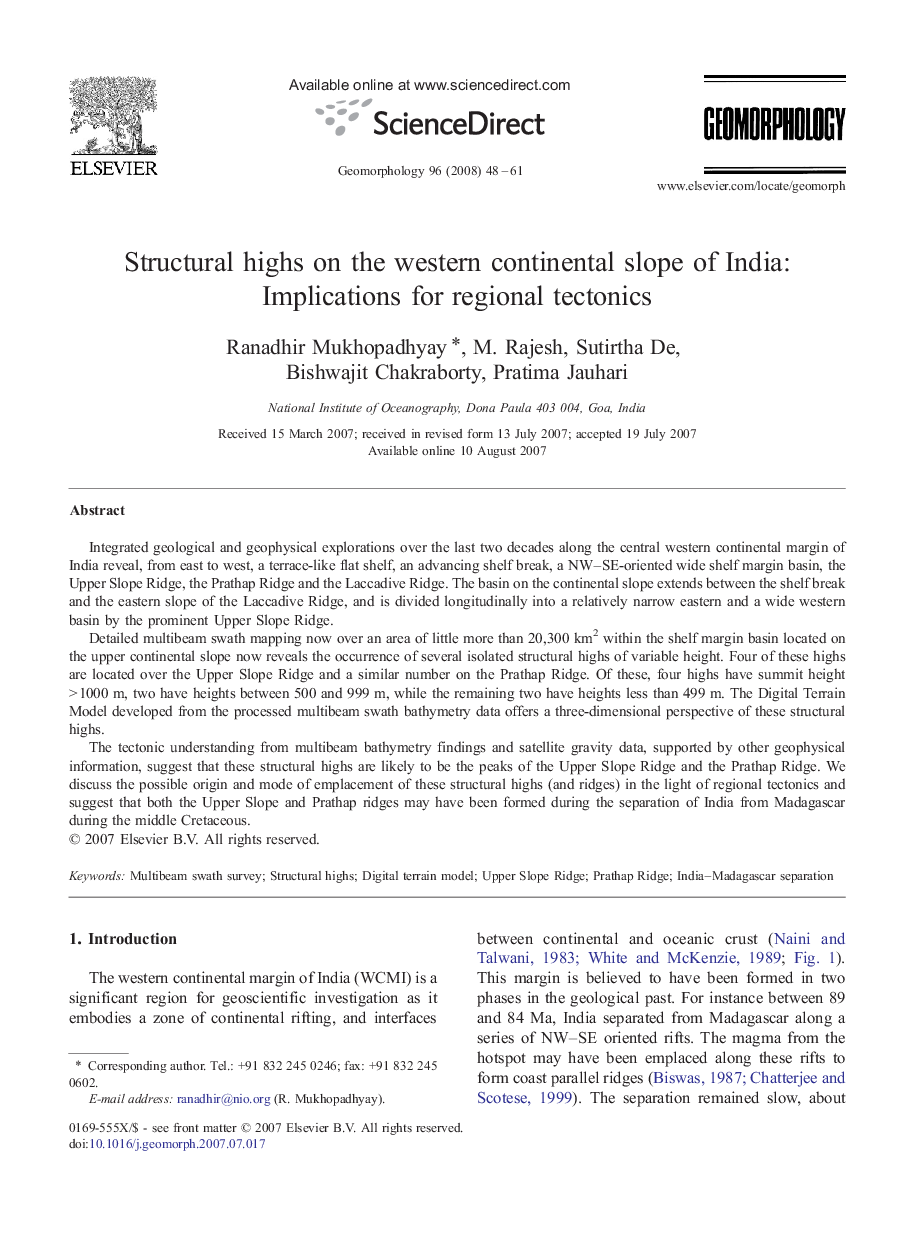| کد مقاله | کد نشریه | سال انتشار | مقاله انگلیسی | نسخه تمام متن |
|---|---|---|---|---|
| 4686761 | 1635561 | 2008 | 14 صفحه PDF | دانلود رایگان |

Integrated geological and geophysical explorations over the last two decades along the central western continental margin of India reveal, from east to west, a terrace-like flat shelf, an advancing shelf break, a NW–SE-oriented wide shelf margin basin, the Upper Slope Ridge, the Prathap Ridge and the Laccadive Ridge. The basin on the continental slope extends between the shelf break and the eastern slope of the Laccadive Ridge, and is divided longitudinally into a relatively narrow eastern and a wide western basin by the prominent Upper Slope Ridge.Detailed multibeam swath mapping now over an area of little more than 20,300 km2 within the shelf margin basin located on the upper continental slope now reveals the occurrence of several isolated structural highs of variable height. Four of these highs are located over the Upper Slope Ridge and a similar number on the Prathap Ridge. Of these, four highs have summit height > 1000 m, two have heights between 500 and 999 m, while the remaining two have heights less than 499 m. The Digital Terrain Model developed from the processed multibeam swath bathymetry data offers a three-dimensional perspective of these structural highs.The tectonic understanding from multibeam bathymetry findings and satellite gravity data, supported by other geophysical information, suggest that these structural highs are likely to be the peaks of the Upper Slope Ridge and the Prathap Ridge. We discuss the possible origin and mode of emplacement of these structural highs (and ridges) in the light of regional tectonics and suggest that both the Upper Slope and Prathap ridges may have been formed during the separation of India from Madagascar during the middle Cretaceous.
Journal: Geomorphology - Volume 96, Issues 1–2, 1 April 2008, Pages 48–61